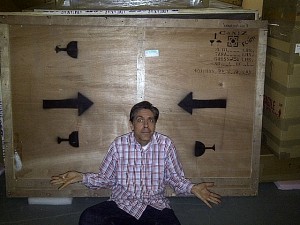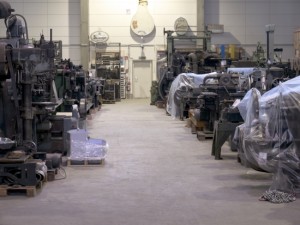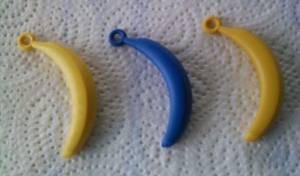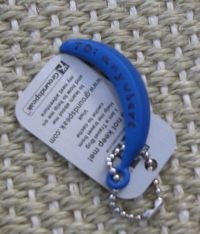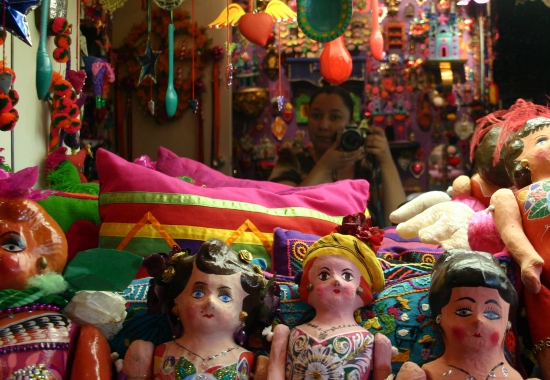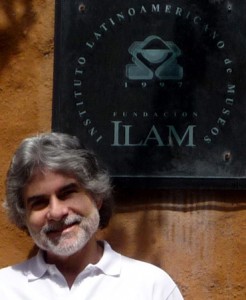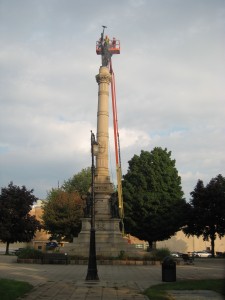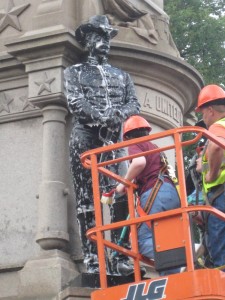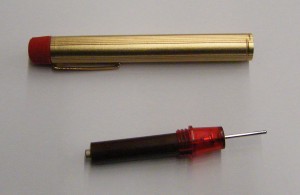Why do registrars use white gloves? Well, so you can see when they are dirty! “Registrars do it with gloves on”, this is almost a slogan.
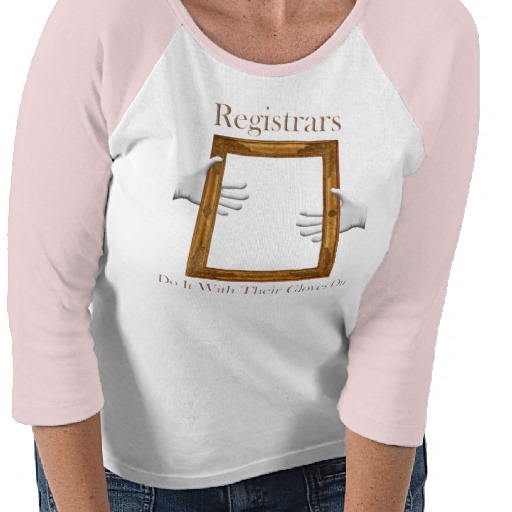
taken from here
All collection objects pass through the hands of the registrar and his / her team of assistants, from the very day of accessioning until they leave for exhibition or lent. And a good registrar never allows anyone to touch the objects without very clean white gloves or gloves with nonslip rubber bullets, also very clean, if the objects are heavy or slippery.
UPDATE 2013/01/15: Forget about the rubber bullets. As you can see in the comments section that’s not best practice. Use of nitrile gloves – or nylon gloves with nitrile palms for the heavy artifacts – is much better.
They are white cotton gloves, they are not blue jeans!
I remember about 20 years ago I gave several pairs of clean white gloves to a new apprentice of mine, explaining how to use them and why, and so on. The next day the assistant came with gloves dyed dark green; this apprentice said to me: “well, this way one doesn’t see the dirt on them.” Please… that’s mentally having blue jeans…
All of us know we can wear a blue jeans several days (Oh, c’mon, who doesn’t?), you won’t see much dirt… (as they are dark blue). But the white gloves used to handle objects are white for exactly that reason: to see when they are dirty and so one can exchange them immediately for clean ones and don’t handle the next object with dirty gloves. Imagine to handle objects in the collection with dark gloves “one doesn’t see the dirt on” and the damage and stains that occur to the objects handled.
We can say that if there is a symbol for museums registrars worldwide it’s a pair of white gloves! This holds especially true to registrars who handle art, documents or archaeological artifacts. It is not just a smart advertising idea of the company that sell those shirts. The Mid-Atlantic Association of Museums in the USA have a project called the “White Gloves Gang”, where registrars, collection managers, arcivists, museum studies students… help one day voluntarily in a chosen museum with a collections project.
The “White Gloves Gang” would be a suitable name for registrars and collection managers worldwide…
This text is also available in French translated by Kelsey Brow.
